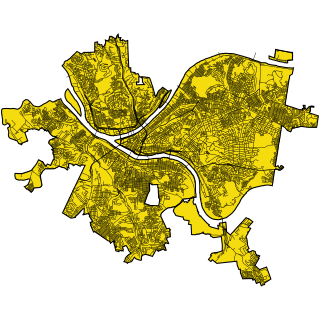Source:Hamilton/content
Beneath the ornately moulded pulpit of the First Presbyterian Church of Pittsburgh lie the remains of a man. His story is known to but few Pittsburghers, yet he has been intimately associated with this city's commercial and religious history.
Jeremiah Sturgeon came to Pittsburgh in 1780 and typified the thrifty Presbyterian population of that period. His ancestors, Huguenots, had fled to Holland, then carried the linen trade to Ireland, where they prayed their way through the siege of Derry. Hence the piety and worldly prosperity of their descendant. You and I would not have recognized the Pittsburgh of Jeremiah Sturgeon. George Scott, in a faded diary, dated 1794, disposes of it in these unenthusiastic terms: "A likely town, houses log, one church and a good jail." Instead of The Post, Jeremiah culled his knowledge of men and events from "The Mercury," a diminutive double sheet, miles beneath the recognition of a Pittsburgh daily of 1915.
As I write, there lies before me, a little, brown, time-cracked copy of "The Mercury," dated August 5, 1813. It was given to me by Jeremiah's great grandniece and contains such news as follows:
"The stage from Cleveland reports that the siege of the fort (Fort Meigs) had been lifted. No letters by the mail for any person in town."
"Runaway—A negress, named Nance, aged 20, about 5 feet high, thick built, large breasts, had on and took with her a red moreen petticoat, calico pale-grounded short-gown, two new tow slips, one middling good lindsey petticoat. Whoever delivers her to the owner shall receive," etc.
Jeremiah Sturgeon was owner and innkeeper of the "Sign of the Black Bear," a half log, half stone building which stretched between Wood and Market. A market stall now stands at the place occupied by its entrance. However, his prosperity extended beyond these limits above Wood street, as far as present Sixth avenue, including the site of McCreery's store and the First Presbyterian Church. It was in the latter institution that Jeremiah's heart and ambitions were fixed and around which incident centers.
The "Round Church on Wood Street," as the Presbyterian church was called, when Pittsburgh's streets were few and Pittsburgh's buildings without numbers, was a towering influence in the struggling community, and Jeremiah Sturgeon a towering influence in the church. He was one of its elders; it stood upon his prosperity; he had presented it with a burying ground. When we consider his piety and paternal interest in this institution it seems but natural that he should be unusually sistressed when a congregational disagreement resulted in a proposal to form two Presbyterian congregations. Earnestly, he pleaded with his neighbors, in session meetings, produce shops, at the saddlers, and in his own "Black Bear," begging them not to separate, but in vain.
The congregation met for a decision and in his black-braided frock coat, his face lined with grief Jeremiah Sturgeon attended. In the middle of the debate he rose, and, with shaking voice and tears racing down his cheeks, implored his listeners not to "ruin" the church. "For," he said, "Pittsburgh will never be wealthy enough to support two churches."
The church divided, forming the present Second Presbyterian Church. Jeremiah Sturgeon died and was buried behind the church in the graveyard he had given. Several years ago, the many times remodeled church was moved back into the graveyard to make space for McCreery's store. Many of the old graves were removed but, to the faithful old elder and his wife was granted the dignity of being buried beneath the pulpit.
Arnold Bennett, in one of his novels, says: "Lord Waldo possessed great wealth, so much wealth, indeed, that, had he been an American, he might have maintained a prominent position even in the luxurious society of Pittsburgh."
Could Jeremiah Sturgeon but see those words!
